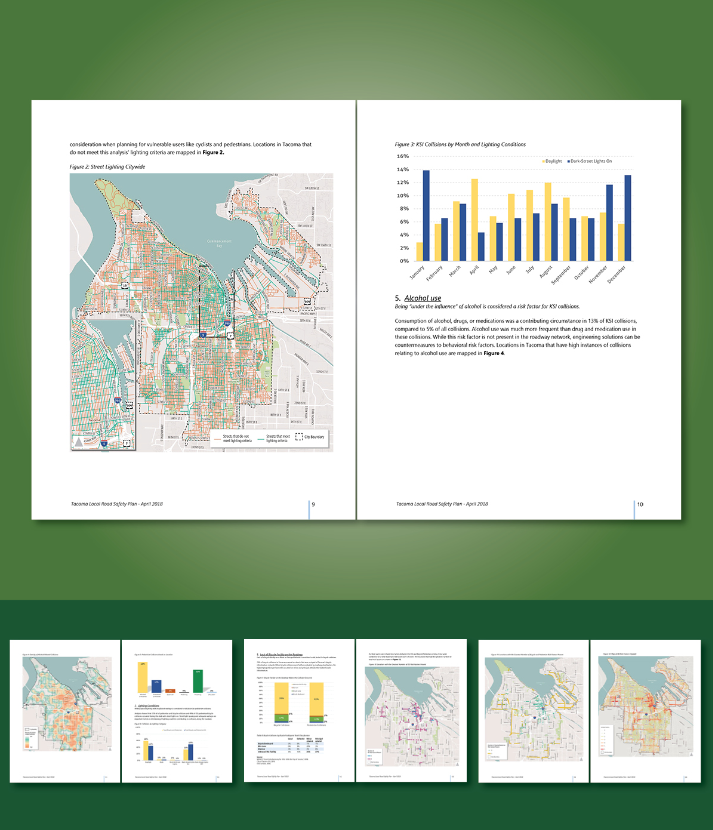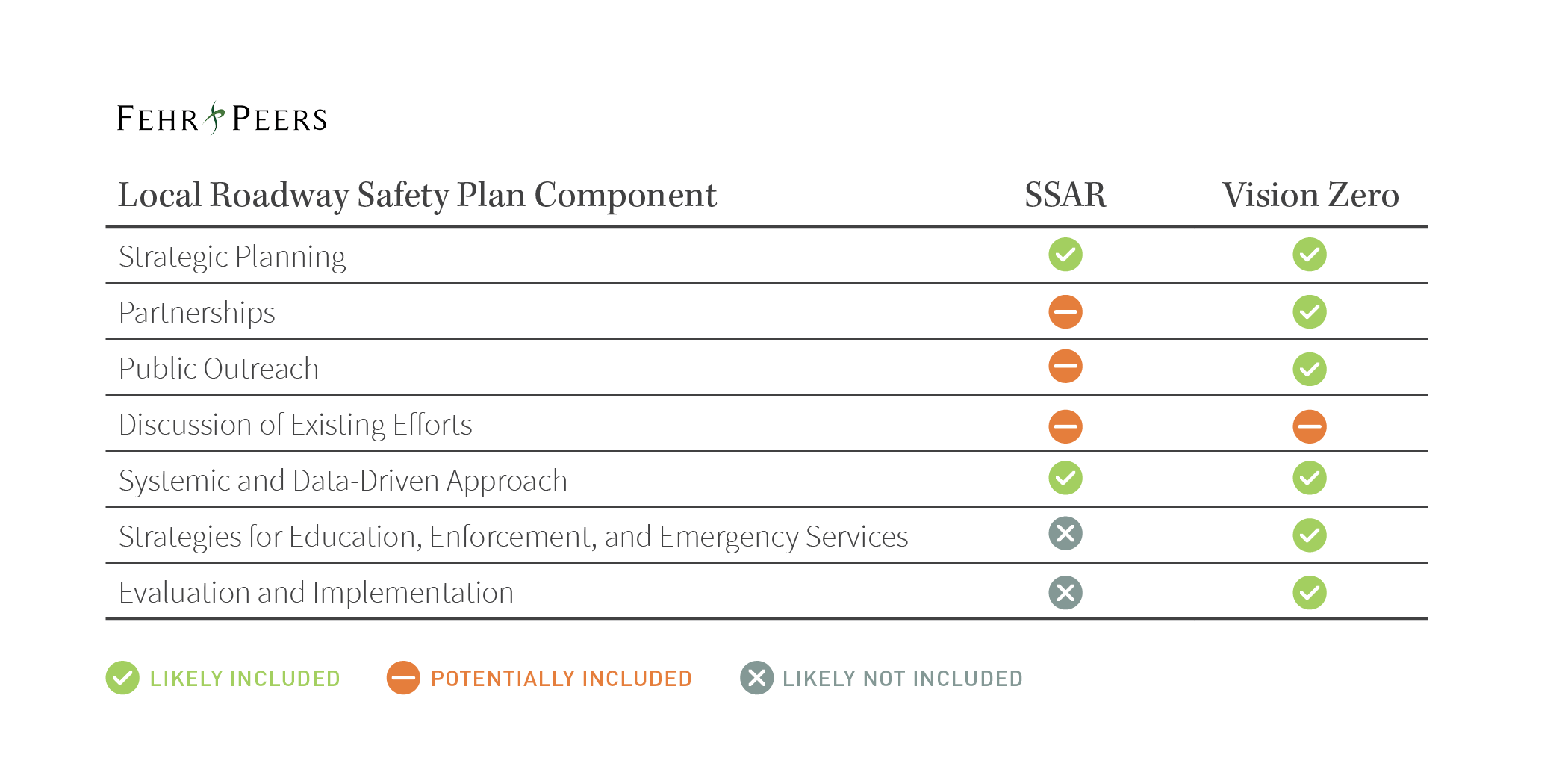A Holistic Approach to Systemic Safety
Local Roadway Safety Plans & New Opportunities
Local Roadway Safety Plans (LRSPs) are in process or have been developed by local jurisdictions in states such as Washington and Iowa, who have partnered with the Federal Highway Administration (FHWA) for the development of LRSP programs. California is now helping to solidify the LRSP as a national trend. The state is building on the success of the Systemic Safety Analysis Report (SSAR) program, while recognizing that engineering is only one component of a holistic safe systems approach. By 2022, Caltrans will require jurisdictions to have a LRSP in place to qualify for Highway Safety Improvement Program (HSIP) funding. More information, including opportunities for plan development funding, may be found on the Caltrans website.
This requirement represents an opportunity for local jurisdictions in California to create new holistic systemic safety plans, or to update existing plans to come in line with LRSP requirements. The LRSP approach to safety, as well as Vision Zero approaches, offer communities throughout the country guidance for establishing safety plans. Fehr & Peers recently partnered with the City of Tacoma, Washington to develop a Local Road Safety Plan, and is now helping the City of King City develop one of the first LRSPs since the Caltrans requirement announcement.
Tacoma LRSP
Fehr & Peers developed Tacoma’s Local Road Safety Plan, which identifies priority safety improvement projects based on high-risk roadway features that are correlated with particular severe collision types. This systemic safety approach goes beyond spot treatments where previous collisions have occurred by identifying locations that will potentially have severe collisions in the future. The project enabled the City of Tacoma to apply for 2018 HSIP funding and resulted in the City securing nearly $1 million related to priority projects in the plan. It was intended to serve as a first step toward developing a Vision Zero plan.
LRSP Key Components
Establishing a vision statement
and related goals to inspire, energize, focus, and help you and your partners picture success. Adopting a Vision Zero policy goal is one option for meeting this requirement.
Identifying a multi-disciplinary group
of public agency and community stakeholders, including safety champions from among the group or elected officials.
Looking Beyond Engineering
to incorporate the other “Es” of safety, including education and enforcement, and focusing on equitable community engagement and investment outlined in the Vision Zero Core Elements.
Developing evaluation criteria
that can be measured and tracked and an implementation plan, which identifies concrete timelines, funding, and responsible agencies and partners.
Learn more about LRSPs
Frequently asked questions:
My jurisdiction has adopted a safety plan. Do we meet the Caltrans requirement?
Systemic Safety Analysis Reports (SSAR) and Vision Zero Action Plans (or other LRSP equivalents) may satisfy the forthcoming Caltrans requirement. Your Caltrans District Local Assistant Engineer can provide additional information.
How do Local Roadway Safety Plans differ from Systemic Safety Analysis Reports and Vision Zero Plans?
The table below compares three common types of safety plans, highlighting which components of Local Roadway Safety Plans may be likely found in Systemic Safety Analysis Reports and Vision Zero Action Plans.
Learn more by contacting one of our industry experts.
Quick Links
© 2017 – 2024 Fehr & Peers. All rights reserved.



